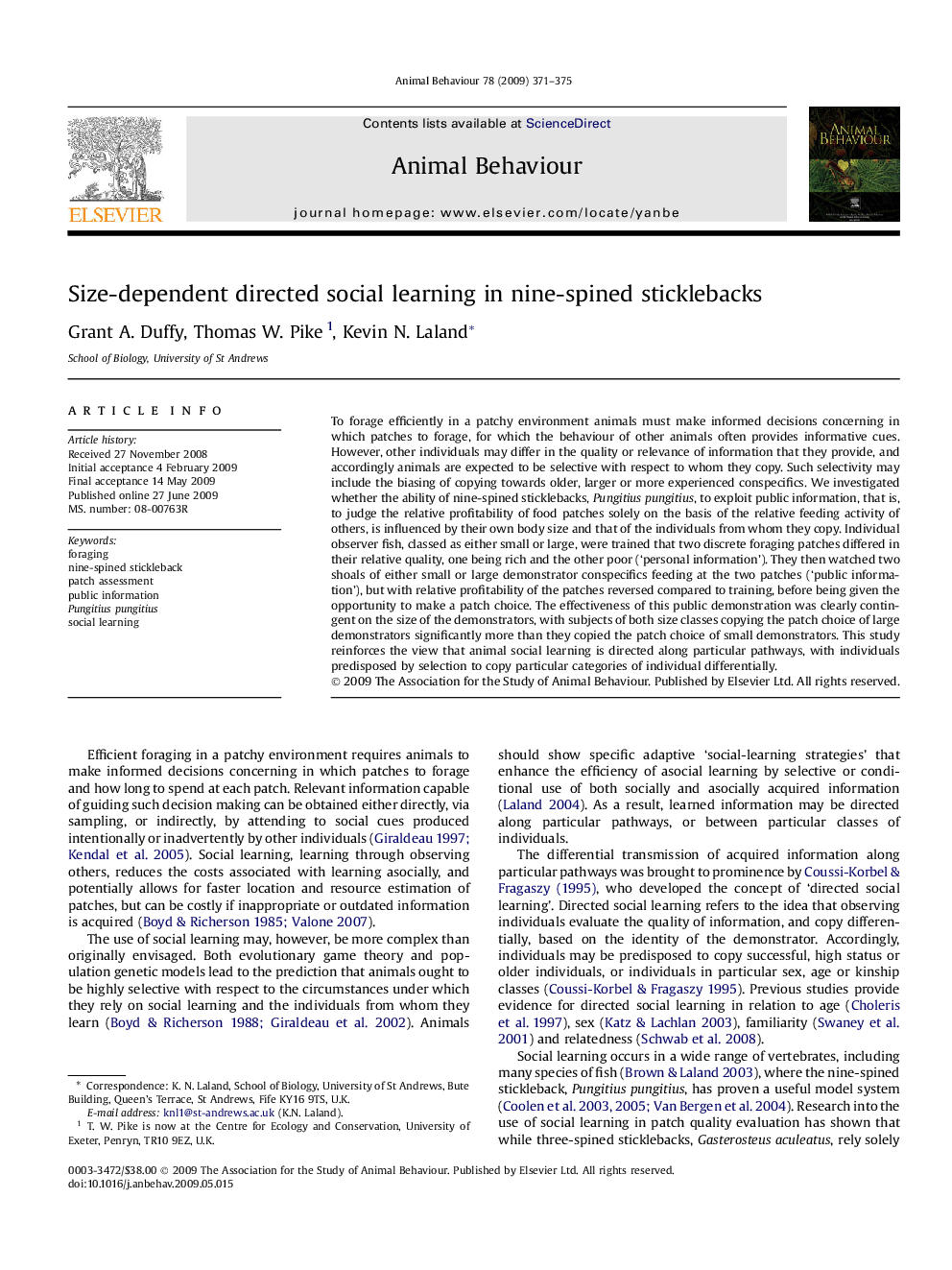| Article ID | Journal | Published Year | Pages | File Type |
|---|---|---|---|---|
| 2417436 | Animal Behaviour | 2009 | 5 Pages |
To forage efficiently in a patchy environment animals must make informed decisions concerning in which patches to forage, for which the behaviour of other animals often provides informative cues. However, other individuals may differ in the quality or relevance of information that they provide, and accordingly animals are expected to be selective with respect to whom they copy. Such selectivity may include the biasing of copying towards older, larger or more experienced conspecifics. We investigated whether the ability of nine-spined sticklebacks, Pungitius pungitius, to exploit public information, that is, to judge the relative profitability of food patches solely on the basis of the relative feeding activity of others, is influenced by their own body size and that of the individuals from whom they copy. Individual observer fish, classed as either small or large, were trained that two discrete foraging patches differed in their relative quality, one being rich and the other poor (‘personal information’). They then watched two shoals of either small or large demonstrator conspecifics feeding at the two patches (‘public information’), but with relative profitability of the patches reversed compared to training, before being given the opportunity to make a patch choice. The effectiveness of this public demonstration was clearly contingent on the size of the demonstrators, with subjects of both size classes copying the patch choice of large demonstrators significantly more than they copied the patch choice of small demonstrators. This study reinforces the view that animal social learning is directed along particular pathways, with individuals predisposed by selection to copy particular categories of individual differentially.
